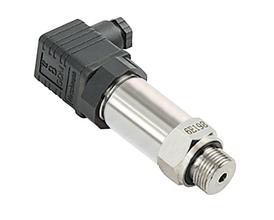 1, the pressure sensor needs to maintain stability after overtime work: Most of the sensors will produce a "drift" after overtime work, so it is necessary to understand the stability of the sensor before buying, this kind of pre-work can reduce the future use will There are all kinds of troubles.
1, the pressure sensor needs to maintain stability after overtime work: Most of the sensors will produce a "drift" after overtime work, so it is necessary to understand the stability of the sensor before buying, this kind of pre-work can reduce the future use will There are all kinds of troubles. 2, pressure sensor package. Sensor packaging, in particular, is often easy to ignore is its rack, but this will gradually expose its shortcomings in the future. It is important to consider the sensor working environment, humidity, and how to install the sensor in the optional transmitter. Will there be strong impact or vibration?
3, what kind of connection between pressure sensor and other electronic devices. Do you need to use a short-distance connection? If you use a long-distance connection, do you need to use a connector?
4, choose what kind of output signal. What kind of output signal the pressure sensor needs to get: mV, V, mA and frequency output digital output, depending on a variety of factors, including the distance between the sensor and the system controller or display, whether there is "noise" or other electronic interference signals. Do you need amplifiers, amplifier locations, etc. For many OEMs with short distances between sensors and controllers, the most economical and effective solution is to use a mA-output sensor. If it is necessary to amplify the output signal, it is best to use a sensor with built-in amplification. For long-distance transmission or presence of strong electronic interference signals, it is best to use a mA-level output or a frequency output. In environments with high RFI or EMI specifications, special protection or filters must be considered in addition to the need to select mA or frequency output. (At present, due to the needs of various acquisitions, there are many kinds of output signals of pressure sensors on the market, mainly 4-20mA, 0-20mA, 0-10V, 0-5V, etc., but 4-20mA is more commonly used. 0-10V two kinds, in these output signals that I lift above, only 2-20mA is two-wire system, what we call the output is a few-wire system does not include grounding or shielded wire, the others are three-wire system).
5, choose what kind of excitation voltage. The type of output signal determines what kind of excitation voltage is selected. Many amplification sensors have built-in voltage regulators, so their supply voltage range is large. Some delivery devices are quantitatively configured and require a stable working voltage. Therefore, a working voltage that can be obtained determines whether a sensor with a regulator is used. When selecting the transmitter, the operating voltage and the system cost must be comprehensively considered.
6. Is it necessary to have interchangeable sensors? Determine if the required sensors can accommodate multiple systems of use. In general, this is important. Especially for OEM products. Once the product is delivered to the customer, the cost of the customer's calibration is considerable. If the product has good interchangeability, then even changing the sensors used will not affect the overall system performance.
7. Others: After confirming some of the above parameters, we must also confirm the process connection interface of your pressure sensor and the supply voltage of the pressure sensor; if you use it under special circumstances, you must also consider explosion protection and protection class.
Dovin limited , https://www.dovinlimited.com
